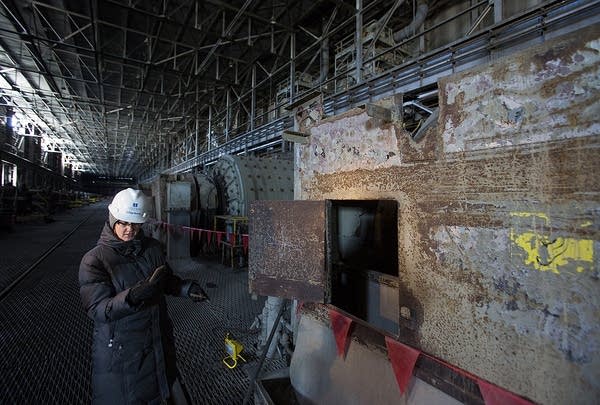The science behind Minnesota mining

Go Deeper.
Create an account or log in to save stories.
Like this?
Thanks for liking this story! We have added it to a list of your favorite stories.
University of Minnesota scientists say research is key to understanding the effects of mining in Minnesota and developing economically and environmentally sustainable practices for the industry.
Although lawmakers turned aside a request for more money to expand research, the university does have several ongoing investigations.
MPR News' Tom Weber talked to three researchers about that science behind Minnesota mining. Here's what he learned.
Turn Up Your Support
MPR News helps you turn down the noise and build shared understanding. Turn up your support for this public resource and keep trusted journalism accessible to all.
Minnesota has very ancient rock
Minnesota has a really unique and diverse geological background," said George Hudak, director of the Minerals Division at the Natural Resources Research Institute at the University of Minnesota-Duluth.
The state has some of the most complicated scientific rocks to understand on Earth and as scientists develop new analytical techniques to study the rocks, researchers are finding new questions to answer including the role of bacteria in where these deposits sit.
Hudak referred to three major rocks in the northern part of the state:
1) 2.7-billion-year-old Greenstone Belts
2) 1.8-to-2-billion-year-old rocks associated with the Mesabi Iron Range and the Animikie Basin.
3) 1.1.-billion-year-old Duluth Complex has copper nickel resources. This area has as much as 7 billion tons of ore.
There are "small, but very significant concentrations of these metals," he said.
The story behind the Duluth Complex
"What it represents is a whole series of intrusive rocks that were associated with an event about 1.1 billion years ago where basically North America tried to split apart," he said. "We call that the Midcontinent Rift."
"As a result of that, enormous amounts of magma, which is molten rock, came up closer toward the earth's surface and when that occurred we had basically reactions that occurred between the magma and the rocks that were adjacent to it, which enabled processes to occur that allowed these sulfide minerals to crystallize with these metal values."
How iron ore mining works
Here is an explainer of the process:
New copper nickel mining plans need more acidity research
Different types of mining cause different environmental impacts, said Nate Johnson, geochemist, water chemist and assistant professor of civil engineering at the University of Minnesota, Duluth.
To put it simply, the most serious environmental impact that has been realized from mining across the U.S. and the world has been the production of acidity or so-called acid mine drainage.
That happens when rock that contains sulfur gets exposed to oxygen in the atmosphere and essentially produces some acidity in the form of sulfuric acid.
Even though this is the most common environmental impact realized from mining across the world, there's been almost no acid mine drainage realized in Minnesota in the last 100 years.
That's because the rock in the Mesabi iron formation has effectively more carbonate which can buffer pH, than it does sulfur. If a rock has more carbonate than sulfur, there won't be acidity produced."
New deposits pulled from the Duluth Complex rocks show closer to a balance of sulfur and carbonate, which could cause different acidity issues for the state.
Minnesota's mining future still uncertain
"We have some big structural issues with iron mining that are going on right now just because of who we serve," said Don Fosnoucht, director of the Center for Applied Research and Technology Development at the University of Minnesota's Natural Resource Research Institute.
Right now we're all geared to sending our iron ore down to a blast furnace type of steel company.
What we're finding is that there are fewer and fewer blast furnaces to send that material to and more and more are being derived from a different type of steel making process.
I think one of the big issues for the state is to figure out how we do serve the rest of the American steel industry so we can have a viable iron mining district long term.
Here is an explainer on how iron ore becomes steel in the current process:
The use of taconite to create steel is decreasing, he said.
"Over the last 10 years, eight blast furnaces were eliminated, which was equivalent to about 17 million tons of iron ore need," he said.
Ford substituted materials in their trucks for aluminum, which eliminated another 550,000 tons of iron ore need, Fosnoucht said.
Minnesota mines might need to change their output to fit the needs of industries, which could include taking some of the oxygen away to send a more metallic product that can be a scrap replacement.






